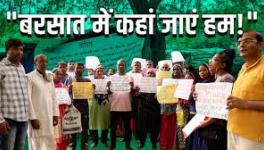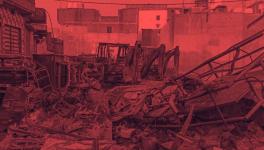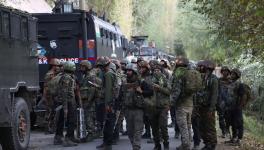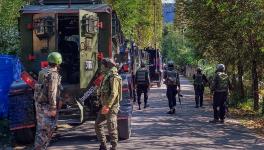Religious Tensions Escalate in North Sikkim Over the Demolition of a Gurdwara
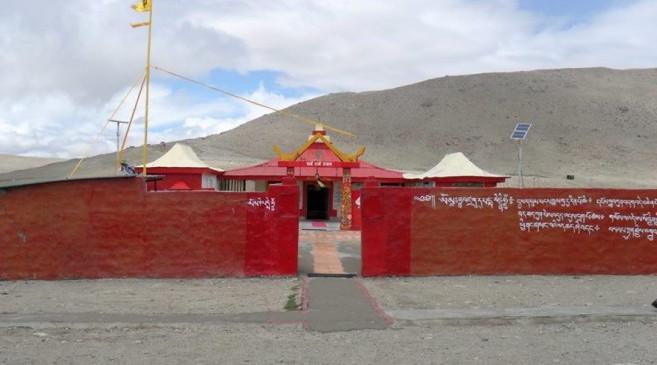
Image Courtesy: Northeast Today
Breaking with tradition for the last entrant into ‘Indian democracy’, Sikkim was in the news in August 2017 over the ‘demolition’ of a Gurdwara built on the shore of Gurudongmar Lake in North Sikkim. The petitioner, a misguided member of the Sikh community, referred to the 1997 built Gurdwara as ‘historic’. The Supreme Court in the matter ordered status quo in the light of an ongoing petition on the same matter in the High Court of Sikkim. The High Court of Sikkim had also ordered status quo as of August 30, 2017. The hearings for the petition in the High Court are to resume in March 2018.
Gurudongmar Lake is considered a holy lake by the people of Sikkim. The name Gurudongmar literally translates as ‘the red-faced Guru’, a direct reference to the wrathful form of Guru Padmasambhava, the patron saint of Sikkim who had spread Buddhism in Sikkim in the 8th Century. In 1997 the 20th Punjab Regiment began constructing a Gurudwara on the shore of the Gurudongmar Lake claiming that the lake had been blessed by Guru Nanak in the 15th Century. However, the Sikh Regiment did not stop at just building a concrete structure on the shore of a pristine lake, they went so far as to claim the relics of Guru Padmasambhava in the Lachen Monastery – located close to the lake but not on the shore – as the relics of Guru Nanak.
In 1998, the Lachen Pipon – the elected head of the local community governance structure called Dzumsa – openly challenged the Army’s claims that the Lachenpas – people of Lachen – supported the construction. The construction was eventually halted by the Forest Department, as the mandatory clearances had not been obtained from the Ministry of Environments and Forests. By then four huts and a parking area, as well as the Gurdwara, had already been constructed. The Punjab Regiment also sought to rename the lake as Guru Nanak Jheel, a move that would alienate the people of Sikkim in their own land.
Responding to several complaints to the Government of Sikkim from the Lachen Rimpoche – reincarnated abbot of the Lachen Monastery – as well as other Lachenpas and monks, the Government of Sikkim, sent the Chief Secretary to the site in 1998. The Chief Secretary observed that prior to his visit to the site, there were no structures on the shore of the lake other than a small hut used for burning incense so that the incense won’t be affected by the strong winds. The Chief Secretary also observed that the structures built by the Army were in direct violation of the Forest Conservation Act as well as the Places of Worship (Special Provisions) Act, 1991 which provides for maintenance of religious character of any place of worship as it existed on August 15, 1947.
By 2000, the Army and the state Government arrived at a resolution whereby the Army promised to hand over the structures to the Lachen Monastery. The Lachen Monastery took over the structures by December 2000. Regarding the complex built, it was decided that by July 2001 the entire complex would be handed over to the Lachen Monastery. In August 2017, the Lachen Dzumsa, as well as the Pipons, decided to renovate the complex. To this effect, the Buddhist religious items were shifted to the Thangu Monastery in North Sikkim, and the few remaining Sikh religious items were handed over to the Chungthang Gurudwara, after which the District Authorities were informed.
The Shri Guru Singh Sabha filed a Civil Writ Petition in the High Court of Sikkim soon after the remaining items had been handed over to the Chungthang Gurdwara. They alleged that the items were ‘forcefully removed’. The issue is, however, what were those items doing in the structure on the lake shore in the first place? The Army, who had built the structures, and the state government had reached an agreement in 2001 that a complete handover to the Lachen Monastery would be carried out. In which case, all religious items should have been removed.
The law regarding land ownership in Sikkim like in most Northeastern states bars non-locals from owning immovable property. In Clause (h) of Article 371F of the Constitution of India – the special provisions with respect to the state of Sikkim – the words unequivocally state that all properties that were owned by the government of Sikkim shall vest with the government of the state of Sikkim. The land on which the structures were built was designated ‘Reserve Forest’, hence any structures can only be built with the approval of the Forest Department.
Newsclick spoke to a Lachenpa who said that the Army had taken the land ‘by force’, and had proceeded to construct their Gurdwara. They have also built a canteen and other infrastructure, and the locals now for the first-time face water shortages. He also stated that the Gurdwara on the shore of Gurudongmar Lake is not the only instance of the Army exerting force and grabbing land. In Chungthang, under similarly dubious circumstances, a Gurdwara and a hostel have been built. The Sikh community has claimed that the name of the place is actually ‘Changi-Thang’, despite Chungthang deriving its name from its description of being ‘high-plains’ in the Lepcha language. Chungthang is also the only place in North Sikkim where paddy can be grown, the locals say that this is linked to Guru Padmasambhava dropping some rice grains from his bowl. However, here too, a Gurdwara has been constructed.
Sikkim is not the only place in the Northeast to be dealing with the pressures of ‘national integration’. In Arunachal Pradesh, the iconic Gyaker Sinyi at Itanagar has come to be referred to as ‘Ganga Lake’. Arunachal Pradesh also has a Tehsil named ‘Vijay Nagar’ in its easternmost district of Changlang. What a 16th century Rajput who ruled a state in northeast Gujarat, has to do with a remote area on the border with Myanmar cannot be determined.
If the Army was requisitioning land for defence purposes, the issue would be different. However, an institution of a secular republic should not be involved with constructing religious structures. Particularly so since these structures have been built without performing even a token of paperwork.
Get the latest reports & analysis with people's perspective on Protests, movements & deep analytical videos, discussions of the current affairs in your Telegram app. Subscribe to NewsClick's Telegram channel & get Real-Time updates on stories, as they get published on our website.











